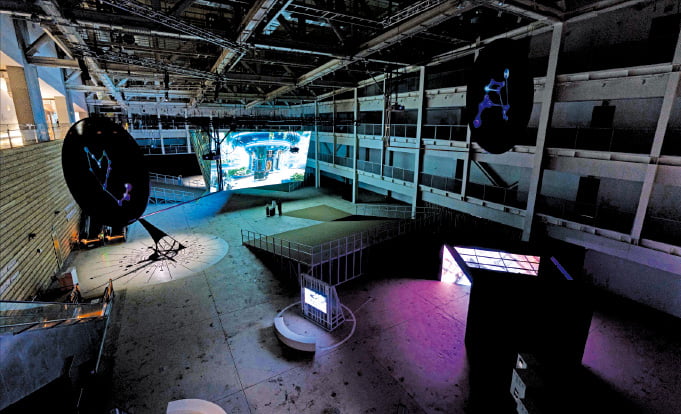[아이뉴스24 윤소진 기자] The generative AI market is being reorganized into a two-power structure between the Microsoft (MS) and Open AI alliance and the Amazon and Anthropic alliance. Amazon Web Services (AWS), which ranks first in the cloud market, which is an essential infrastructure for AI services, and MS Azure, which ranks second, have entered into a race for AI supremacy by each signing large-scale investment contracts with promising AI companies.
Open AI·Anthropic logo. [사진=각 사]
According to the industry on the 25th, AWS made an equity investment worth $4 billion (5.6 trillion won) in Anthropic on the 22nd. Including the $4 billion invested from last year to the first half of this year, the total investment amount is $8 billion (11.2 trillion won). It is interpreted as a strategic move to check the dominance of Microsoft and Open AI in the generative AI market. However, the company announced that even after the large-scale investment, Amazon will not participate in Anthropic’s board of directors and will maintain its minority shareholder status.
Anthropic is an AI company founded in 2021 by researchers from OpenAI. We developed the conversational AI ‘Claude’ series, which is attracting attention as a counterpart to ChatGPT. The ‘Claude 3’ series attracted attention for its performance surpassing GPT-4. Anthropic has attracted a total of $7.3 billion in investment from Google and Salesforce over the past year, and with AWS’s $8 billion investment, its corporate value has exceeded $20 billion.
MS has been building a cooperative relationship with OpenAI since 2019. Starting with an initial investment of $1 billion, a large-scale investment of $13 billion (KRW 18.2 trillion) has been made to date. Through this, MS achieved the result of exclusively installing OpenAI’s cutting-edge AI technologies, such as ChatGPT and GPT-4, into its cloud service ‘Azure’ and office product line.
Competition between the two companies is fierce in the cloud computing market as well. According to market research firm Gartner, in the global cloud market in 2023, AWS ranked first with a 32% share and MS Azure ranked second with 23%. Based on the domestic market, AWS is ranked first and holds a monopoly position of 60%, but MS Azure is trailing behind with 24%. Both companies are making every effort to expand data centers and secure GPUs to secure the high-performance computing infrastructure essential for AI development.
Related articles
The polarization of the global AI market is also evident in the actions of domestic companies. KT established a strategic partnership with MS last September and is pursuing Azure-based AI and cloud-related businesses. SKT invested $100 million (KRW 140 billion) in Anthropic in August last year and is cooperating in the development of a communications-specific large language model (LLM).
Meanwhile, Google is aiming to form a top 3 structure through its self-developed ‘Gemini’ model. Meta and Apple are also preparing to enter the market by developing their own AI models such as ‘Rama’ and ‘MM1’, respectively.
Experts agree that the technological gap between AI companies will widen and competition between cloud companies for investment will become more intense. It is predicted that the hegemony of the AI industry in the future will be determined by the cooperation between AI companies with excellent language models and cloud companies that provide powerful computing infrastructure.
An industry official said, “As AI model development and services require enormous computing resources, investment in AI companies by cloud companies is an inevitable choice.” He added, “Leadership in the future AI market will depend on how efficiently computing power can be provided.” and analyzed.
Presence Research, a global market research firm, reported that the global generated AI market size was $17.65 billion (KRW 24.7 trillion) in 2023, reached $25.86 billion (KRW 36.2 trillion) in 2024, and reached approximately $803.9 billion by 2033. It is expected to reach (1,125 trillion won) in 2024. It is predicted that the average annual growth rate will expand to 46.5% by 2033.
/Reporter Sojin Yoon ([email protected])
What are the potential advantages and disadvantages of a two-power structure dominating the field of generative AI, as suggested by the alignment of Microsoft/OpenAI and Amazon/Anthropic?
## World Today News presents: AI Almanac – A New Era of Innovation
**Welcome to World Today News’ special interview series, AI Almanac, where we delve into the hottest trends shaping the future of technology. Today, we’re discussing the evolving landscape of generative AI and the emergence of a two-power structure. Joining us are Dr. Anya Sharma, a leading AI researcher and author of “The Algorithmic Age,” and Mr. Jayden Lee, a seasoned technology investor with expertise in cloud computing.**
**Section 1: The New AI Powerhouses**
* **Interviewer:** Dr. Sharma, the article highlights a clear division forming between Microsoft and OpenAI on one side and Amazon and Anthropic on the other. What factors are driving this alignment, and what implications does this have for the development of generative AI?
* **Dr. Sharma:**
* **Interviewer:** Mr. Lee, from an investment standpoint, what makes Anthropic and OpenAI appealing targets for giants like Amazon and Microsoft? What distinguishes them from other players in the field?
* **Mr. Lee:**
**Section 2: The Cloud Computing Battleground**
* **Interviewer:** The article mentions the fierce competition between AWS and Azure. Dr. Sharma, how crucial is access to high-performance computing infrastructure like cloud services for advancing AI capabilities?
* **Dr. Sharma:**
* **Interviewer:** Mr. Lee, given the substantial investments both AWS and Microsoft are making in AI, do you think this will lead to an AI duopoly or will other players be able to compete effectively?
* **Mr. Lee:**
**Section 3: The Global AI Race & Future Outlook**
* **Interviewer:** We see Google, Meta, and Apple entering the fray with their own AI models. Dr. Sharma, how will this influx of new contenders impact the market dynamics and the pace of innovation?
* **Dr. Sharma:**
* **Interviewer:** Mr. Lee, what advice would you give to startups and smaller companies looking to navigate this crowded and rapidly evolving AI landscape?
* **Mr. Lee:**
* **Interviewer:** Thank you both for sharing your insights on this fascinating and rapidly evolving field. This concludes our first installment of AI Almanac. Join us next week as we explore the ethical implications and societal impact of generative AI.
![Generative AI market ‘two-strong structure’ reorganized… MS·OpenAI vs Amazon·Anthropic [AI브리핑] Generative AI market ‘two-strong structure’ reorganized… MS·OpenAI vs Amazon·Anthropic [AI브리핑]](https://img.lb.inews24.com/v1/facebookexternalhit/face/626x352/772e76de3c6d1b.jpg)

